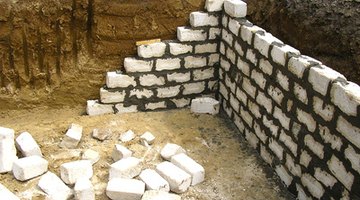Southern Building Codes: Foundation Standards
The set of codes known as the Southern Building Codes are an older version that have been integrated into the International Building Code (IBC), just as the Uniform Building Code and the National Building Code standards have been.

The aspects related to foundations contained in the current IBC regulations are reflective of the Southern Building Codes of the past, with updated requirements that address new structural design methods.
Standard Foundation Codes
The Southern Building Codes (SBC) were created in 1940 by the Southern Building Code Congress International to cover the southeastern United States. This set of building codes was used for all aspects of structural design and implementation in that region, including foundation codes, until its integration into the IBC in 1997. Yet the regulations governing the building of foundations remain fairly consistent to this day, regardless of the overriding authority.
The standard foundation codes within the SBC, under the guidelines of the International Residential Code of the IBC, address the proper design of structural foundation types for both residential and commercial buildings. The state of Texas incorporates aspects of the SBC in its foundation codes, as reported by the website houston-slab-foundations.info. Slab foundations are a common type used in residential structures. Information on this website indicates that a slab-on-ground foundation must be able to resist soil volume differentials (earth-shifting aspects) and must prevent damage to the support of the building. Both of these requirements refer to the load-bearing capability of a slab foundation to ensure that the building will not be adversely affected by changes in soil volumes or other alterations that occur adjacent to a residential structure. (Reference 1)
Permanent Wood Foundations
One of the more recent innovations in foundation designs is known as a Permanent Wood Foundation (PWF). This type of foundation is often used in basement designs, and consists of a set of wood-framed, load-bearing foundation walls sheathed in exterior-grade plywood. It is required that all lumber used in a PWF be pressure-treated with moisture-resistant chemicals to prevent decay such as brown rot and fungus damage from debilitating the integrity of the foundation.
According to the Southern Pine Council of Louisiana, these types of foundations satisfy the regulations of model building codes, such as the SBC and others, as well as federal requirements. PWF types are also accepted by institutions involved with lending, home warranties, and fire insurance, according to information about PWF designs on the Southern Pine Council website. (Reference 2)
Other Foundation Types
SBC guidelines applicable to foundations are reflected in slab and non-slab concrete foundation types. Two types in particular are addressed by all standard building codes, due to the fact that they are used regularly for different soil and grade conditions. A shallow concrete foundation, which includes the slab type, is set three feet into the ground and uses a spread footing design to transfer the weight of the structure through the load-bearing walls to the soil.
The deep concrete foundation is used when adjustments to grade levels on hillsides are necessary or when flooding is an issue, such as in structures built in flood plains. This type of foundation is recognized by the typical piers and support posts that are found in raised foundations, as well as caissons and drilled shafts that penetrate the soil. This foundation is required to transfer structural loads through these support elements to solid footing designs, which must be included in the surveyor reports and building plans to allow for these irregularities in soil characteristics. (Reference 3)
References
Writer Bio
Greg Jackson is a transcriber, proofreader and editor. Jackson has been writing professionally since 1975, drawing on creative writing courses and personal experiences. His most outstanding work has been as an editor, proofreader and transcriber on two published books, "Douglas Fairbanks: In His Own Words" and "Bohemian Grove: Cult of Conspiracy."
Photo Credits
- building a basement 2 image by Kostyantyn Ivanyshen from Fotolia.com
- building a basement 2 image by Kostyantyn Ivanyshen from Fotolia.com
More Articles



